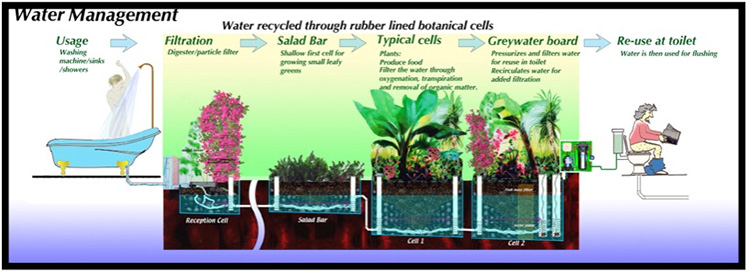OFF-THE-GRID LIVING is experiencing a renaissance. Dwellings devised to support a sustainable lifestyle could help us adapt to some of our biggest present-day challenges—from a lack of housing for the world’s growing population to pollution and extreme weather. With the climate crisis in mind, architects are looking to more resilient options that don’t depend on the overdrawn electrical grid at all. Some designers are reinvigorating decades-old “biotecture,” like the 1970s Earthships made from reclaimed and natural materials; others are rejecting synthetics and leaning on Indigenous practices of building with natural materials. Meanwhile, weather-resistant domes and 3D-printed dwellings could house more people with fewer resources. We asked architects and engineers about off-the-grid living solutions that could help us adapt to changing environments.
Earthships
The definition of the term off the grid usually focuses on electricity, but Earthships involve much more. Every feature of these structures, including heating, cooling, water supply, wastewater treatment, electricity, and some food production, is off the grid. Recycled materials like tires and bottles make up the walls and other structural elements; these components are already distributed around the world, so procuring them doesn’t use much energy. Overall, Earthships allow us to be self-sustaining, and therefore happier.
—Jonah Reynolds, Earthship designer and builder at Pangea Design Build
3D-printed homes
We use trees and other plants to produce the fiber and the resin for printing a home in Maine, so it’s 100 percent renewable. You can change insulation on the walls and roof to make them more energy efficient, so you don’t even get air leaks. If in 200 years, your great-grandchildren don’t want the home anymore, they can grind it up and put it back into the printer and do it again. It makes a good choice for off-the-grid living because it’s customizable to your landscape. It can be made in any shape you desire. If you send in a drawing, in most cases, it can be produced.
—Habib Dagher, executive director of the Advanced Structure and Composites Center at the University of Maine
Tiny houses
A tiny house is generally defined as a dwelling with a main floor of under 450 square feet. Our models come on wheels and can have composting toilets or incinerator toilets, so that means you don’t even need to be hooked up to a sewer. We have special washers, refrigerators, and dishwashers that use a lot less electricity and water than you would in a regular home. We can pre-wire the home so that it’s easy to install solar. Your energy footprint, and just your footprint in general, is much smaller.
—Trine Rieck, lead designer at Tiny Heirloom
Geodesic bioceramic domes
Geodesic domes are constructed with precast ceramic composite materials, which are combinations of ceramics and nontoxic natural fibers like hemp and basalt. The space is really made to mimic the natural environment that humans evolved in. They are highly resilient to fires, floods, hurricanes, and earthquakes, and result in about a 90 percent reduction in carbon footprint. They’re also easy for people to build—it’s kind of like putting together a Lego set. The domes are absolutely a great choice for off-grid living, and I think that at some point, they will be very common choices worldwide.
—Morgan Bierschenk, co-founder and CEO of Geoship






Leave A Comment